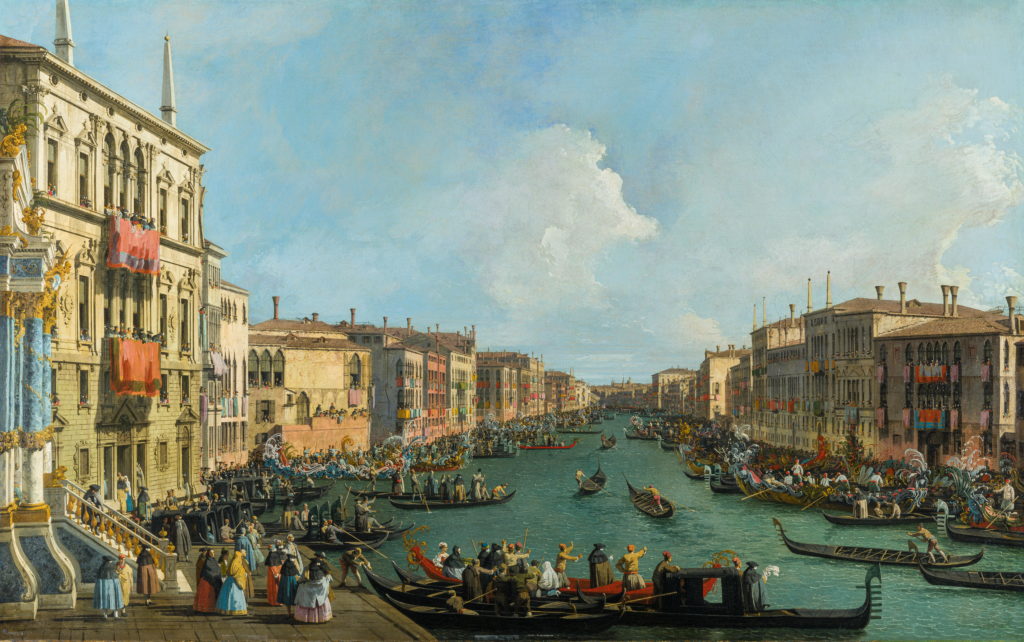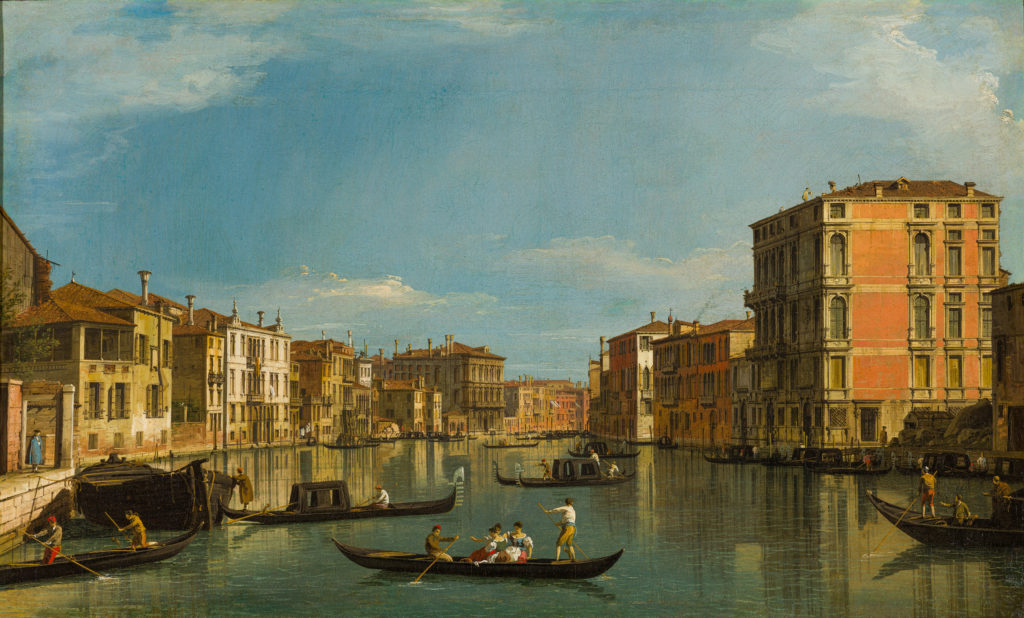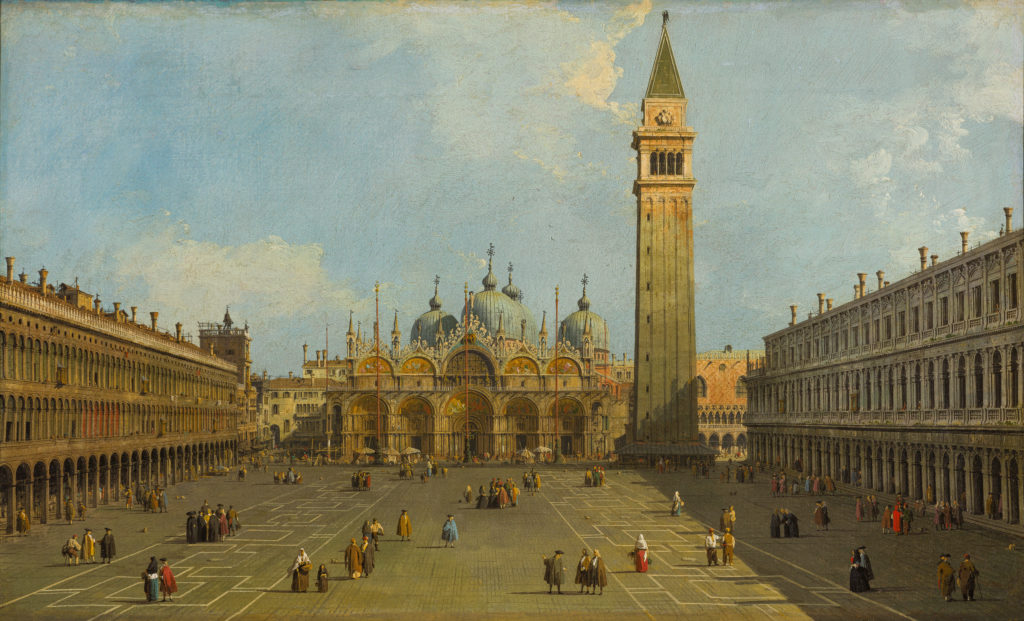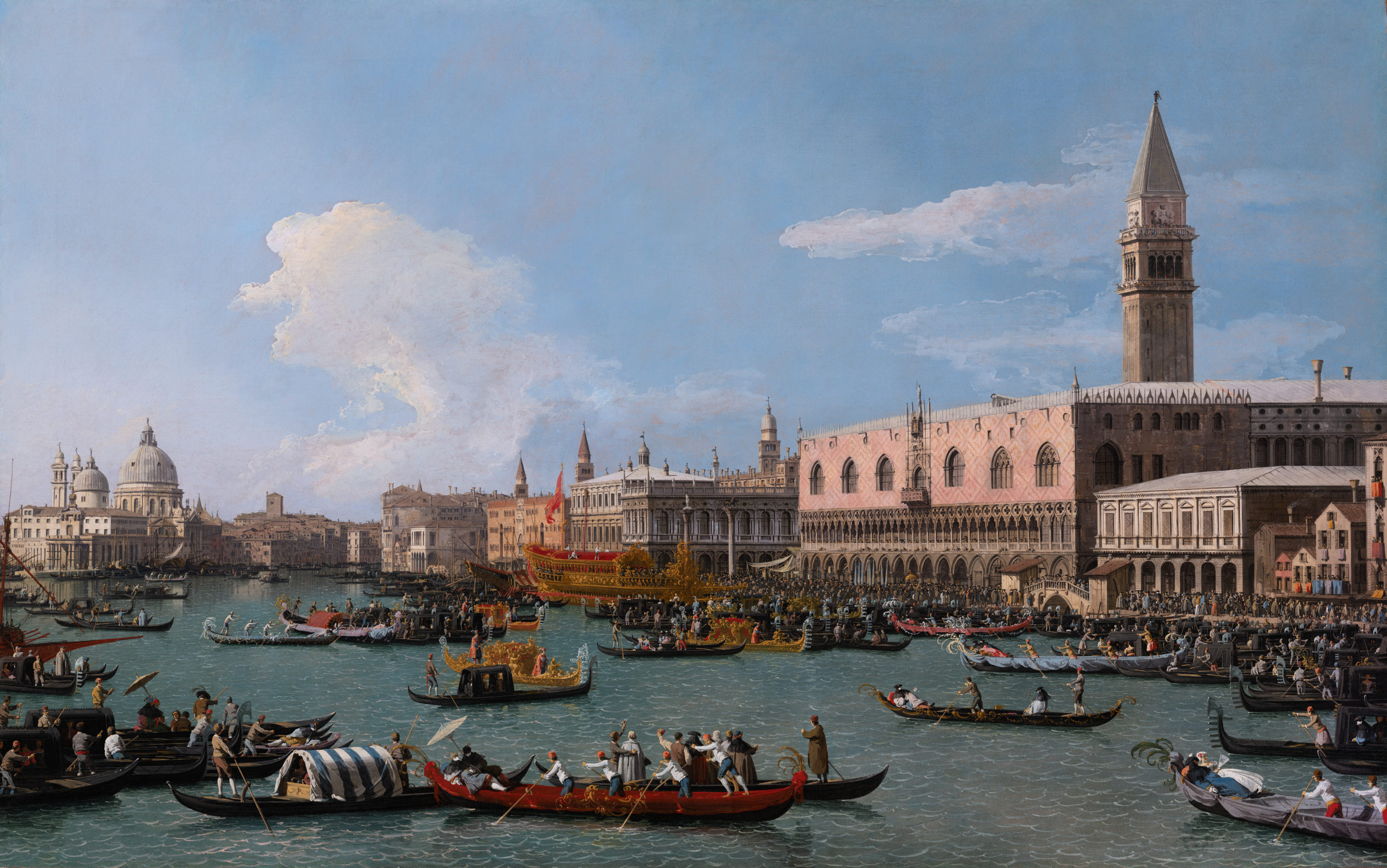Canaletto’s Venice Revisited – National Maritime Museum, London
A review of Canaletto’s Venice Revisited, opening 1 April at the National Maritime Museum. This impressive exhibition is a wonderful chance to see Canaletto’s largest commission up close. But with strong messages about climate change and mass tourism, you may wonder if you should visit La Serenissima for yourself.

Lead image: Canaletto, The Grand Canal, Ascension Day: The embarkation of the Doge of Venice for the Ceremony of the Marriage of the Adriatic.
Both images: © From the Woburn Abbey Collection
Canaletto’s Venice Revisited
This review follows on nicely from a few others here on the Salterton Arts Review blog. Firstly, I managed a trip to Venice between lockdowns in 2020; I wrote a few posts which you can find here. And then in 2021 as museums were reopening once more, I visited the Queen’s House in Greenwich and saw various works on loan from Woburn Abbey during a period of major refurbishment works.
And major refurbishment works they certainly are, as they are still going on a year later (and will continue until 2024). A wonderful opportunity, then, for an exhibition at the National Maritime Museum based around the 24 views of Venice commissioned by the future 4th Duke of Bedford from Canaletto. It was normal for British aristocrats on the Grand Tour to purchase or commission such paintings. In fact it was Canaletto’s bread and butter. But this is thought to be Canaletto’s largest single commission. It also includes two works which are larger than the artist’s standard format, and which nicely bookend the exhibition.
While an opportunity to view 24 delightful paintings in a convenient London location is lovely, we tend to expect more from our exhibition curators. We need an ‘angle’. There are many potential angles to this Canaletto exhibition: the Grand Tour, Canaletto and England, Venice in the 18th Century, and so on. Interestingly, the team behind Canaletto’s Venice Revisited have chosen as their angle a cautionary tale. What was relatively limited tourism in Canaletto’s day has now spiralled out of control in an age of cruise ships and daytrippers. Combined with the threat of climate crisis, what are we to make of Venice’s future? Blending this narrative with pleasant, classic Venetian views is a tall order. So let’s take an in depth look to determine whether it’s successful.

The Woburn Abbey Canalettos
Let’s take a moment, first of all, to appreciate the paintings themselves. Two dozen views of Venice: churches, campos, the Arsenal, the Piazza San Marco, and of course the glorious canals. Canaletto’s works are all about the intricate details, sketched out with the merest of brushstrokes. As well as boats of all kinds, there are people going about their business, evidence of commercial and religious life, and even little dogs to add points of interest.
One of the wonderful elements of Canaletto’s Venice Revisited is how close you can get to these details. Normally, at Woburn Abbey, the paintings hang three deep. So the ones at the top must be hard to make out for all but the eagle-eyed. Here, they are spaced out, given plenty of room. The gallery walls are deep in colour, the paintings spot-lit. Multimedia displays draw out details you might otherwise miss: the busy rooftops, the multicultural city. And the information panels are perfect: clear, concise, and each with a little map, its pin indicating the painting’s location.
So if we take the exhibition merely at face value: an opportunity to see the Duke of Bedford’s Canaletto’s while they would otherwise be in storage, this exhibition is excellent. I relished this opportunity and wasn’t disappointed.

Venice, Tourism and Climate Change
However, as I said, this exhibition isn’t about viewing the paintings in a vacuum. From the very beginning, we learn about Venice’s connection to tourism. It was very firmly a stop on the Grand Tour. Young, aristocratic men (rarely women) spent a good couple of years travelling around the main centres of Europe and possibly further afield. This was the culmination of their education, and a marker of taste and refinement. As symbols of this refinement (and decoration for their homes), they purchased paintings, models and other souvenirs. Canaletto did so well off this trade from largely British tourists he became the artist to commission. He even came over to England for a time.
Contrast this with tourism in Venice today. Huge cruise ships dwarfing the palazzos (maybe not any more?). Tourists wading through ever more frequent floods. In fact, sea levels 60cm higher than they once were (which we can evidence from looking closely at Canaletto’s paintings). One of the text panels even mentions Venetians having to walk their dogs early or late to avoid losing them amongst the tourist throngs.
I understand this angle. We can’t deny the impact of both tourism and climate change on life in Venice. What I did struggle with slightly taking in all of this information as part of Canaletto’s Venice Revisited is that it feels like a problem with no solution. Should I have appreciated the beautiful Venetian views, and then resigned myself to not visiting again so as not to exacerbate the problem? Is there a responsible way to see the city for yourself? Without a more explicit call to action, I’m not sure.

Final Thoughts on Canaletto’s Venice Revisited
I think perhaps the moral of the story is that Canaletto’s Venice can’t be revisited, or shouldn’t be. It’s an interesting take. Perhaps a responsible one. And isn’t the easiest path the National Maritime Museum could have taken.
For me, as I said, I didn’t mind the strong angle. I wasn’t quite sure what was expected of me, however, and I think this was for me the main drawback. With a call to action, whether responsible tourism, climate activism or something else, I would have left with a sense of purpose. As it was, I left filled with both a sense of Venice’s unique beauty, and a serious concern for its future.
And perhaps that’s what it’s all about. If all the billions of people on the planet want their own once in a lifetime opportunity to experience Venice, that’s a large carbon footprint. Not to mention an overcrowded city that is not conducive to genuine, local community life. Maybe we should stick to enjoying Canaletto’s beautiful paintings a little closer to home? We could do a lot worse than the Woburn Abbey selection.
Salterton Arts Review’s rating: 3.5/5
Canaletto’s Venice Revisited from 1 April to 25 September 2022
Trending
If you see this after your page is loaded completely, leafletJS files are missing.

